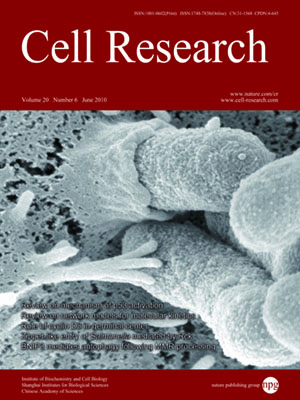
Volume 20, No 6, Jun 2010
ISSN: 1001-0602
EISSN: 1748-7838 2018
impact factor 17.848*
(Clarivate Analytics, 2019)
Volume 20 Issue 6, June 2010: 622-630
REVIEWS
Network models for molecular kinetics and their initial applications to human health
Gregory R Bowman1, Xuhui Huang2,3 and Vijay S Pande1,4
1Biophysics Program, Stanford University, Stanford, CA 94305, USA
2Department of Chemistry, The Hong Kong University of Science and Technology, Kowloon, Hong Kong
3Department of Bioengineering, Stanford University, Stanford, CA 94305, USA
4Department of Chemistry, Stanford University, Stanford, CA 94305, USA
Correspondence: Vijay S Pande,(pande@stanford.edu)
Molecular kinetics underlies all biological phenomena and, like many other biological processes, may best be understood in terms of networks. These networks, called Markov state models (MSMs), are typically built from physical simulations. Thus, they are capable of quantitative prediction of experiments and can also provide an intuition for complex conformational changes. Their primary application has been to protein folding; however, these technologies and the insights they yield are transferable. For example, MSMs have already proved useful in understanding human diseases, such as protein misfolding and aggregation in Alzheimer's disease.
Cell Research (2010) 20:622-630. doi:10.1038/cr.2010.57; published online 27 April 2010
FULL TEXT | PDF
Browse 2174


